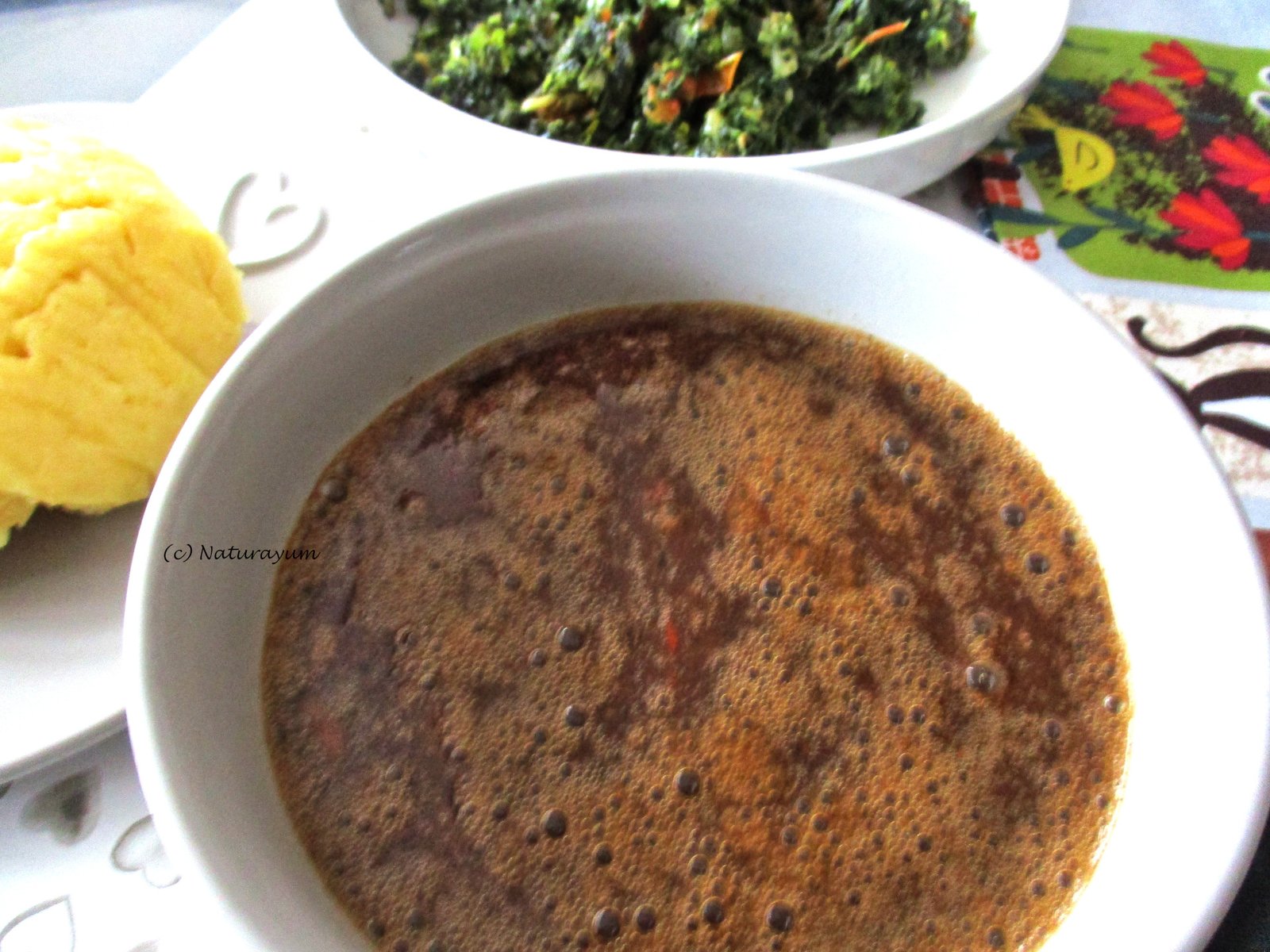Nkui (Sticky Bamiléké Sauce): Authentic Recipe & Preparation Guide from Scratch

Nkui is a cherished traditional sauce from the Bamiléké people of Cameroon, renowned for its thick, sticky consistency and rich, savory flavor. Often served with corn couscous, fufu, or other starchy sides, Nkui is more than just a condiment—it’s a celebration of cultural heritage and culinary ingenuity. In this comprehensive guide, we’ll walk you through how to prepare authentic Nkui from scratch, sharing traditional techniques, essential ingredients, and expert tips to bring a true taste of Cameroon to your kitchen.
Table of Contents
- What is Nkui?
- Cultural Significance
- Essential Ingredients
- Step-by-Step Preparation
- Cooking Tips and Variations
- Serving Suggestions
- Frequently Asked Questions (FAQs)
- Conclusion
What is Nkui?
Nkui is a traditional Bamiléké sauce characterized by its sticky texture and robust flavor. Traditionally prepared using the stalks of the nkui plant, this sauce is rich in nutrients and is often enjoyed during festive gatherings or special occasions. Its unique taste comes from a harmonious blend of fermented or pounded starch, aromatic spices, and palm oil, which together create a sauce that is both hearty and delicious.
Cultural Significance
For the Bamiléké people of Cameroon, Nkui is more than just a meal accompaniment—it’s a symbol of cultural pride and tradition. Often prepared for significant events, including postpartum celebrations and family feasts, Nkui represents the resourcefulness of indigenous cooking methods. By using locally available ingredients and time-honored techniques, this sauce connects modern diners with the culinary heritage of Cameroon.
Essential Ingredients
To make authentic Nkui from scratch, you will need the following ingredients. Note that traditional Nkui is made with nkui stalks. If you cannot source authentic nkui stalks, you can substitute with a combination of grated plantain and a starchy thickener (such as cassava or cocoyam) to mimic the texture.
Main Ingredients:
- Nkui Stalks or Substitute Base:
• 1–1.5 kg fresh nkui stalks* OR 500 g grated plantain + 200 g cassava/cocoyam flour
*Nkui stalks are a local specialty; if unavailable, the substitute will work to provide a similar sticky consistency.
Aromatics & Spices:
- Onions: 2 medium, finely chopped
- Fresh Garlic: 4 cloves, minced
- Fresh Ginger: 1 tablespoon, grated
- Scotch Bonnet or Chili Pepper: 1, finely chopped (adjust heat to taste)
- Bouillon Cube: 1 (optional, for added depth)
- Salt and Black Pepper: To taste
Flavor Enhancers:
- Palm Oil: 3–4 tablespoons (for richness and authentic color)
- Water or Stock: 2–3 cups (as needed for simmering)
Step-by-Step Preparation
Preparing the Nkui Stalks (or Substitute Base)
- If Using Nkui Stalks:
• Thoroughly wash and peel the nkui stalks. Cut them into small pieces and steam or boil until very soft. Then, pound or blend into a smooth, slightly sticky paste. - If Using the Substitute:
• Grate ripe plantains and combine with cassava or cocoyam flour. Mix with enough water to form a thick, paste-like consistency. This will serve as the base mimicking the texture of traditional nkui paste.
Sautéing Aromatics and Spices
- Heat the Oil:
• In a large, heavy-bottomed pot, heat the palm oil over medium heat. - Sauté Onions, Garlic, and Ginger:
• Add the finely chopped onions, minced garlic, and grated ginger. Sauté for 3–5 minutes until the onions are soft and translucent, releasing their aromatic flavors. - Add Chili and Seasonings:
• Stir in the chopped scotch bonnet or chili pepper. Crumble in the bouillon cube (if using) and season with salt and black pepper. Let the spices cook for another 2 minutes.
Cooking and Thickening the Sauce
- Combine the Base:
• Add your prepared nkui paste (or substitute mixture) to the pot with the aromatics. Stir well to incorporate the flavors. - Add Liquid:
• Pour in 2–3 cups of water or stock to create a thick, stew-like consistency. Bring the mixture to a simmer. - Simmer and Thicken:
• Allow the sauce to simmer on low heat for 20–30 minutes, stirring occasionally. The sauce should thicken to a sticky, cohesive texture as the starches fully gelatinize. - Adjust Seasonings:
• Taste the sauce and adjust salt, pepper, or any additional spices as necessary. If the sauce is too thick, add a splash more water; if too thin, let it simmer uncovered for a few more minutes.
Cooking Tips and Variations
- Traditional Texture: For an authentic texture, use freshly harvested nkui stalks if available. The substitution of grated plantain with cassava flour is a practical alternative.
- Flavor Variations: Enhance the sauce with additional herbs like thyme or basil if desired. Some cooks also add a dash of smoked paprika for a subtle smoky note.
- Consistency Control: Stir frequently during simmering to prevent sticking and ensure even thickening.
- Serving Options: Nkui is traditionally served with corn couscous or fufu, but it can also be enjoyed as a dipping sauce or a hearty side dish.
Serving Suggestions
Nkui is versatile and can be enjoyed in several ways:
- With Starchy Sides: Serve the sticky sauce with corn couscous, fufu, or boiled yams to soak up its rich flavor.
- As a Condiment: Use it as a flavorful accompaniment to grilled meats or fish.
- At Festive Gatherings: Present Nkui as part of a traditional African feast to share the authentic taste of the Bamiléké culture.
Frequently Asked Questions (FAQs)
Q1: What are nkui stalks, and where can I find them?
A1: Nkui stalks are a traditional ingredient used by the Bamiléké people in Cameroon. They might be available in specialty African markets or through online ethnic food retailers. If unavailable, a substitute of grated plantain mixed with cassava or cocoyam flour works well.
Q2: How long should I simmer the Nkui sauce?
A2: Allow the sauce to simmer for 20–30 minutes on low heat to ensure it thickens and the flavors meld together.
Q3: Can I adjust the consistency of the sauce?
A3: Yes, you can add more water or stock if the sauce is too thick, or simmer it uncovered for a few more minutes if it’s too thin.
Q4: What dishes pair well with Nkui?
A4: Nkui pairs excellently with corn couscous, fufu, or boiled yams, and it also makes a great accompaniment to grilled or stewed meats.
Conclusion
Nkui (Sticky Bamiléké Sauce) is a true taste of Cameroonian heritage—a rich, flavorful sauce that showcases the ingenuity of traditional African cooking. Whether made with authentic nkui stalks or a creative substitute, this sauce is a versatile and nourishing addition to your culinary repertoire. Follow our detailed, step-by-step guide to craft Nkui from scratch and enjoy a genuine experience of Bamiléké cuisine in your own kitchen.
Share your tips, experiences, and variations in the comments below. Enjoy your homemade Nkui and savor the authentic taste of Cameroonian heritage!



